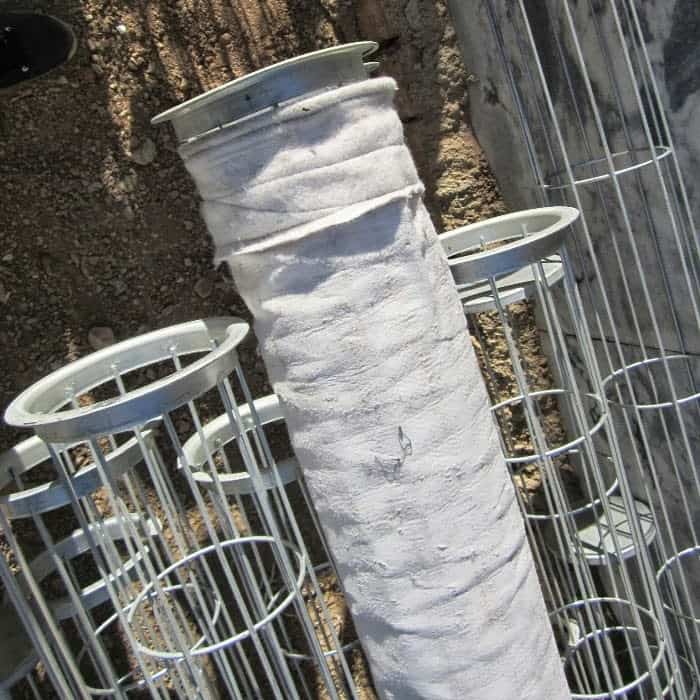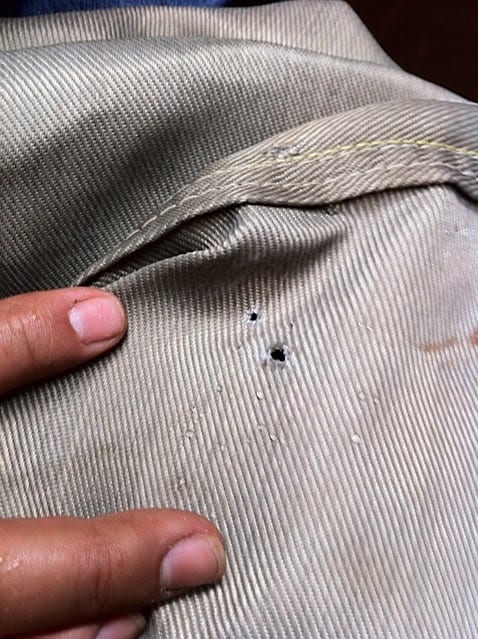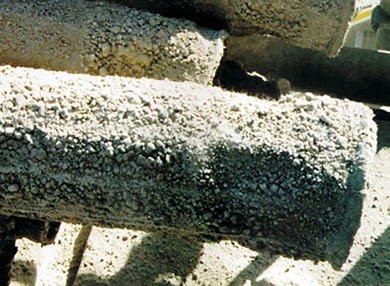Other Causes of Baghouse Filter Failure
The four main reasons why baghouse filters fail prematurely are abrasion, exceeding the maximum operating temperature, chemical attack and fire. All of these can dramatically shorten the the life of a baghouse filter as well as cause serious damage to the baghouse system*. However there are other lesser known causes that can cause premature dust collector filter failure. Let’s review them.
“If the filter system is undersized, then the filters will suffer increased wear…”
Undersized Dust Collector for CFM
It is essential that an industrial baghouse system be carefully engineered and sized to handle the right amount of air flow (CFM) for the application. If the filter system is undersized, then the filters will suffer increased wear. Additionally, an undersized system will eventually lead to inadequate air flow, poor venting that can damage equipment, higher emissions, loss of reclaimed product and a hazardous work environment.
A dust collector can be undersized in two main ways: (1) by not having enough filters for the airflow, and (2) by having too much airflow through too small of a unit, thus creating high internal can/interstitial velocity.
Sadly, many less reputable sales reps and even some dust collector OEMs often undersize systems in order to undercut their competition on price. Other times, plants have tried to increase system capacity without consulting with an experienced dust collector manufacturer and even up overloading their units.
Wrong Filter Media or Style of Filter
The choice of baghouse filter media depends on a number of factors, such as temperature, resistance to chemicals, target dust size, physical characteristics, collection efficiency and price. If the choice of fabric is unsuitable for the application required, this can have a dramatic reduction in the lifespan of the filter.
For example, trying to use a low temperature filter fabric such as polyester (max temp 250F – 275F) in a high temperature (300F – 500F) baghouse system will quickly result in filter failure.
Often, operators must consider more than just the maximum temperature as the mix of temperature, humidity and chemical makeup in the gas stream can cause failures if not accounted for when selecting the media. For example, in many gypsum applications the temperature is not normally very high (under 200F) so polyester media might seem to be a good choice. However, the combination of elevated temperatures and high humidity can cause the gypsum to react with the polyester and cause hydrolysis, which leads to the bag becoming hard and brittle. For this reason many gypsum applications used aramid filters even though the temperature normally would allow for cheaper polyester bags.
Finally, many suffer problems due to using cartridge filters where a bag filter is more appropriate. Man applications can make good use of cartridge collectors to improve operation and reduce the overall cost of a system. However, we often see people try to use cartridges in applications ill-suited for them such those with irregular-shaped material, sticky materials, or high temps.

Need your baghouse filter replaced?
Bent and Damaged Cages
During regular maintenance or when stored improperly, cages can be bent, damaged, warped and or even corroded. Using baghouse filter cages in this condition will lead to the filters failing prematurely. When a cage is bent or damaged, sharp points can form from broken wires and cracked welds that can physically damage the filter creating tears and holes. If rust or corrosion is present on the cage, this creates abrasion and leads to tears and holes in the filter. Additionally, bent cages will cause the bags to hit each other or the sides of the housing when they are pulsed creating localized wear spots.

Poor Installation
Improper installation of filter bags can also result in early bag failure and loss of cleaning effectiveness. For top load pulse jets, the most common install errors involve not seating the snap band properly. For a bottom load unit the bag not being folded over the top of the cage properly, poor clamp placement and tightening the clamp too much or too little are all common.
Additionally, duct design, turning vanes and deflection plates all contribute to uniform gas distribution to all filters. However poor installation of these elements can result in high airflow regions that will abrade the filter bags. Rough handling such as bending or stepping on the bags during installation or improper tensioning can also cause holes or tears in the bag filters reducing their strength and durability.
Moisture

Common sources of condensation and moisture in a baghouse are leaking gaskets around the doors and airlocks or upset conditions in the process. Moisture can weaken the filter media, causing filter leaks or failures, and allow dust to bypass the filters. It can also alter the adhesion characteristics of the dust creating hard-to-clean mud and blinding of the filter. Moisture can also create chemical issues within the baghouse. For example, acid gases mixed with high moisture can cause an acid flash. This is where the acids condense out of the gas stream and damage the filters and housing.
As discussed in this and the previous article, there are a number of reasons why industrial baghouse filters fail prematurely. Baghouse.com has experience helping many with these and other problems find solutions to get their systems back to peak performance. For more information and to arrange a quote for all your baghouse requirements, please contact us at Baghouse.com
* See article “Top 4 reasons why baghouse filters fail”
Need Help Ordering Baghouse Filters?
Whether you know exactly what you want or could use some help getting the right dust collection filter, we’ll put together a free quote with the perfect filter for you.
